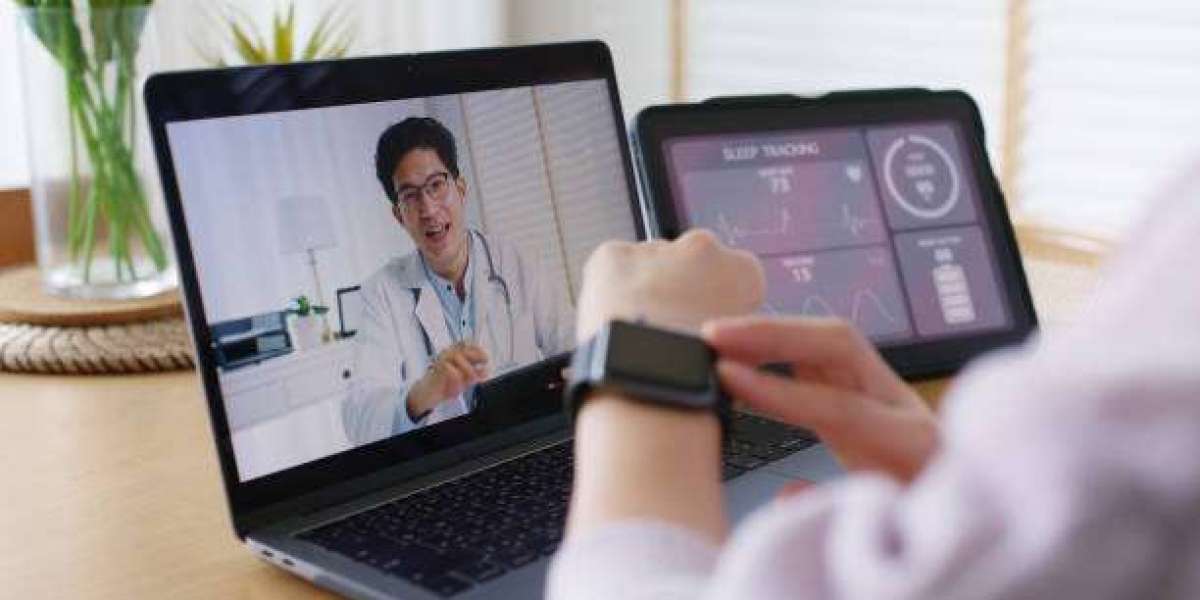Remote Health Monitoring: How Doctors Are Using Fitness Data for Preventative Care
In recent years, technology has reshaped nearly every aspect of our lives—including how we manage our health. One of the most significant advancements is the rise of remote health monitoring, especially through fitness devices and wearables. From smartwatches that track heart rates to apps that log daily steps and sleep, the data we generate daily is now playing a vital role in modern healthcare.
More and more doctors are turning to this stream of real-time health information to guide preventative care. By analyzing fitness data, healthcare providers can detect early warning signs, offer personalized advice, and even prevent chronic conditions before they start. In this article, we’ll explore how fitness data is changing the game in preventative healthcare and what it means for the future of medicine.
What Is Remote Health Monitoring?
Remote health monitoring involves using technology to observe a person’s health data outside of a traditional clinical setting. Devices like fitness trackers, smartwatches, blood pressure cuffs, and glucose monitors collect real-time data and share it with healthcare providers through digital platforms.
This continuous stream of data helps doctors get a fuller picture of a patient’s day-to-day health instead of relying on occasional office visits or lab results taken every few months. For people with chronic illnesses—or those at risk—this can be life-changing.
How Fitness Data Plays a Role
Fitness trackers and smartwatches have become more advanced over time. Today, they can collect data such as:
Heart rate and heart rate variability
Blood oxygen levels
Sleep duration and quality
Daily steps and physical activity
Calories burned
Stress levels
Breathing patterns
Some devices even monitor ECG (electrocardiogram) readings or detect irregular heart rhythms. All of this data can be securely shared with healthcare providers for deeper insights into a patient’s lifestyle and health patterns.
Preventative Care: Stopping Problems Before They Start
Preventative care focuses on stopping health issues before they become serious. This includes managing risk factors like poor diet, inactivity, high blood pressure, or stress—areas where fitness data can provide critical insights.
Here’s how fitness data is helping doctors take a proactive approach:
Detecting Early Warning Signs Subtle changes in sleep patterns, heart rate, or activity levels can signal the start of a problem. A drop in activity might indicate fatigue, depression, or pain. An increase in resting heart rate could suggest illness or stress. Doctors can spot these changes early and respond accordingly.
Chronic Disease Management For conditions like diabetes, hypertension, or heart disease, tracking daily habits is essential. Doctors can monitor how lifestyle changes—like diet or exercise—affect blood sugar, blood pressure, or weight over time. This helps fine-tune treatment plans and keeps patients on track.
Medication Adjustments Some medications can affect sleep, heart rate, or weight. Continuous data lets doctors see how a patient is responding to a medication in real-time, which can lead to quicker and more accurate adjustments.
Mental Health Monitoring Fitness trackers often detect signs of stress, sleep disruption, or inactivity—common symptoms of anxiety or depression. Doctors can use this data to open conversations about mental health and recommend appropriate support or treatment.
Improving Patient Engagement When patients see their own data and understand how their choices affect their health, they’re more likely to stay motivated and make healthy changes. It turns passive patients into active participants in their care.
Examples in Action
A cardiologist might use data from a smartwatch to monitor a patient with arrhythmia, reducing the need for in-office heart tests.
A diabetic patient can wear a continuous glucose monitor (CGM) that sends blood sugar readings to a phone app, where the doctor can see trends and suggest dietary tweaks.
A patient recovering from surgery might use a wearable to track activity and sleep. Their doctor could detect signs of complications—like low movement or increased heart rate—before a serious issue develops.
Privacy and Security Concerns
Of course, sharing personal health data raises important questions about privacy and security. Medical professionals and tech companies must follow strict regulations like HIPAA (in the U.S.) to ensure that data is protected.
Patients should also be aware of how their data is used. Most devices give users control over which data is shared and with whom. Always read the privacy settings and policies on any app or wearable device.
The Benefits for Doctors and Patients
Remote health monitoring powered by fitness data brings several benefits for both doctors and patients:
Faster diagnosis: Continuous monitoring provides more context and helps identify problems that may not show up during a short office visit.
Customized care: Doctors can tailor treatment plans based on each person’s real habits, sleep, stress, and exercise levels.
Fewer hospital visits: With data available remotely, patients can skip unnecessary visits or tests.
Better health outcomes: When issues are caught early, treatment is more effective, and long-term health improves.
Challenges and Limitations
Despite its promise, remote health monitoring has challenges:
Data overload: Too much information can overwhelm both patients and doctors. Systems must filter and highlight the most important data.
Access and inequality: Not everyone can afford or use wearable tech. This creates a gap between tech-savvy users and others.
Device accuracy: While many fitness devices are reliable, they’re not always 100% accurate. They should support—not replace—professional diagnosis.
Tech literacy: Some users, especially older adults, may need help learning how to use wearables and interpret their data.
Looking Ahead: The Future of Preventative Healthcare
As technology continues to evolve, remote health monitoring will likely become a standard part of healthcare. We may see:
Integration with medical records: Health data from wearables could automatically update a patient’s electronic health record (EHR).
AI-powered insights: Artificial intelligence could analyze trends and alert doctors to risks faster than manual reviews.
Personalized health coaching: Apps could use data to offer tailored fitness, nutrition, or stress management advice.
Virtual check-ins: Combined with video visits, remote data allows doctors to “see” their patients more often without being in the same room.
Governments and health systems are beginning to invest in digital health infrastructure, and insurance providers are exploring how to support patients who use wearables to manage chronic conditions. These changes could lead to more affordable care and better outcomes for everyone.
Tips for Using Fitness Data to Support Your Health
If you want to use your fitness tracker as part of your preventative care, here are some tips:
Choose the right device: Look for one that fits your needs—whether it’s steps, sleep, heart rate, or all of the above.
Share data with your doctor: Many apps allow you to generate health reports or sync with healthcare platforms.
Be consistent: Wear your device regularly for the most accurate data trends.
Don’t obsess: Use the data as a guide, not a source of stress. Focus on progress over perfection.
Stay informed: Learn what your metrics mean and how to use them to support your goals.
Final Thoughts
The combination of wearable technology and remote health monitoring is opening up new possibilities in preventative care. It empowers patients to take control of their health while giving doctors the tools to act earlier and more effectively.
By paying attention to the data your body produces every day, you can make smarter choices, avoid preventable illnesses, and stay healthier for longer. This isn’t the future of healthcare—it’s already here, and it’s only getting better. Visit Venzec.icu for additional resources on improving your overall health.



